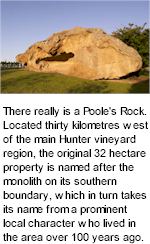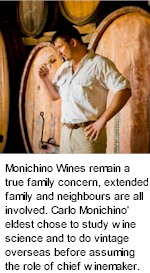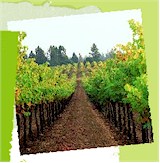| |
|
|

|
The philosophy at Watershed has always been to produce fully eloquent Margaret River wines that are elegant and assertive with articulate varietal character
Awards And Triumphs At International Wine Competitions Have Always Been A Lesser Priority But Continue To Accrue Nonetheless Sangiovese is a celebrious Mediterranean elegant yet garrulous, always defined by the terroir and clime of its birth. Savoury and sublime, its assured tannins and persistence of tomato olive fruit are moreish and made for food, treat your Senses to Agnello or marinated Al Fresco fare.
|
|
|
|

|
Mostly Cabernet Sauvignon with a quarter of Malbec
Red Wine For Rockers Those who choose to give in to their hedonistic urges Plush generosity and a layering of flavours, pretty up front but let the wine breathe and suddenly these dry, fine and lightly chewy tannins build on the back palate, lending a savoury edge to the dark fruit richness. A skerrick of Merlot from a block adjacent the Claymore cellar door, sits in the barrel store until called for inclusion as a finishing aid, bringing structure and softness, achieving a seamless wine that leaps to the beat.
|
|
|
|

|
McWilliams has established strong relationships with good growers who train their vines to deliver the best quality wine grapes
Inheritance Collates Components Which Are Brought Together And Vinified Into A Ripe Fruit driven red wine with a flavoursome palate that drinks just beautifully when served chilled
|
|

AFTER EXTENDED BOTTLE DEVELOPMENT ON YEAST LEES, Yarrabank is finally released from beneath the Yering cellars, the progeny of an ongoing joint venture between Champagne Veuve A. Devaux and Yering Station. Made to strict Methode traditionnelle, Yarrabank is widely recognised as one of Australia's flagship sparkling wines. No expense is spared and a number of rigorous measures are taken throughout every step of vinification. Taking at least three years to complete, each bottle is treated individually from the time of tirage until release.

PRIMAVERA GETS BETTER EVERY YEAR, Lubiana experiments with wild or cultured yeasts and employs whole bunch ferments where appropriate to create remarkable wines. He is mindful that Great Pinot Noir is never a blockbuster, Primavera opens with engaging bouquets of red floral fruit, the story that follows tells a tale of juicy berries, fine grained tannins and a touch of undergrowth. Inspiring improvements throughout the vintages have been achieved, without compromising the seamlessness and balance of a forward drinking, limited production Pinot Noir in light Beaujolais styling.

THE FIRST AND FINAL WORD IN WORLD CLASS BAROSSA CABERNET, aged in a luxurious selection of completely new French oak hogsheads. The Ashmead block is so low yielding that it was almost gutted and re established to more productive plantings. The vines suffer from the notorious Dead Arm disease but yields an extraordinary quality of fruit. Fortunately for the world of wine, Ashmead was retained as an Australian Grand Cru Classe. Elderton are not unfamiliar with ultra Cabernet, having claimed significant trophies including the 1993 Jimmy Watson.
|
Poole’s Rock Vineyard
was founded 1988 in the Broke Fordwich district of Hunter Valley by McQuarie banker David Clarke
Located thirty kilometres west of the main Hunter vineyard region, the original 32 hectare property is named after the monolith on its southern boundary, which in turn takes its name from a prominent local character who lived in the area over 100 years ago. Four prime hectares were planted solely to chardonnay vines, an endeavour described by legendary Australian winemaker, Murray Tyrrell, as the viticultural showpiece of Hunter Valley. David Clarke spent two years in search of this ideal site, one that would provide a suitable microclimate and alluvial soils conducive to the production of premium chardonnay. He engaged viticultural consultant Di Davidson to assist with the vineyard’s design. Development and planting commenced in spring 1988. They took meticulous care in establishing the vineyard, which is fully irrigated. The vines are now fully mature and producing remarkable quality fruit.

The first vintage was released in 1990, with subsequent high quality releases securing Poole’s Rock Chardonnay’s outstanding reputation. Made entirely from estate grown grapes, Poole’s Rock Chardonnay is an elegant wine with a richly textured palate. It is crafted from grapes grown on the estate vineyard and fermented in Vosges oak barriques from several of France’s premier cooperages. The wine undergoes partial malolactic fermentation, while components of the overall blend are kept on yeast lees. This adds an appealing creamy complexity to the wine which is of medium weight and typically exhibits restrained, ripe tropical fruit and citrus aromas. A full, rich and voluptuous style, Poole’s Rock Chardonnay gained its reputation at Sydney’s finest restaurants and now boasts an enthusiastic following around the world.
In 1994 Poole’s Rock acquired a 13 hectare property on the banks of the Wollombi Brook near Broke, which he named Cockfighter’s Ghost. The name dates back to when Governor Macquarie detailed explorers to establish an overland route to Hunter Valley. One wild, windy night as the intrepid travellers were crossing Wollombi Brook, misfortune struck. The lead horse, Cockfighter became bogged in river quicksand and drowned despite all efforts. A fateful night that gave birth to the legend of Cockfighter’s Ghost.
The Cockfighter’s Ghost range is intended as a no compromise niche quality label, producing single varietal wines. The original vineyard is planted to chardonnay, semillon and viognier, and a small block of old vine shiraz dating back 50 years. These estate vines are the foundation of the range, which currently includes Chardonnay, Semillon, Verdelho, a Victoria Pinot Gris, Adelaide Hills Sauvignon Blanc, Clare Valley Riesling and red varietals from South Australia, McLaren Vale Merlot, Shiraz and a Langhorne Creek Cabernet Sauvignon.
In 1998, a Premium Reserve Cockfighter’s Ghost label was added, featuring an award winning Cabernet Sauvignon, sourced from the famed terra rossa soils of Coonawarra. The Premium Reserve range is intended as the epitome of regional expression of a single variety and is only released in exceptional vintages. The range includes a Tasmania Pinot Noir and Orange Pinot Noir Chardonnay Sparkling.
Early in 2001 Poole’s Rock Wines acquired the neighbouring Wollombi Brook Vineyard, developed in the seventies and known then as the Simon Whitlam vineyard, which was planted to Semillon and Chardonnay. The site, which has similar soils and microclimate, effectively doubled the total vineyard area. Today there is a total of fourteen hectares under vine on this vineyard planted to chardonnay and verdelho. In February 2002, Poole’s Rock Wines purchased one of Southcorp Wines largest regional wineries, the extensively refurbished operations at Pokolbin, in the heart of Hunter Valley. This considerable facility sits proudly on the historic 73 hectare Glen Elgin estate, founded in 1895. A ten hectare mature, drip irrigated Shiraz vineyard, some vines dating back to 1900, was added to Poole’s Rock Wines estate. This historic vineyard has been re-named Post Office Vineyard in recognition of the original Pokolbin Post Office, which was once located on this site.
Louis Roederer is
one of the largest remaining independent Champagne Houses, owned by the same family since it was founded in 1776
In the period 1832 to 1870, under the direction of Louis Roederer, the house gained top ranking worldwide with sales of 2,500,000 bottles, including 390,000 in the United States and 660,000 in Russia where Louis Roederer champagne was an outstanding success. In 1876, Louis Roederer II who had succeeded his father created the Cristal Cuvée for Tsar Alexander II. Louis Roederer identified Russia as his special priority, and sales there quickly grew to as much as 60 per cent of total shipments.

Louis Roederer champagnes became renowned at the Imperial Court and among the Russian aristocracy, who had been passionate about French culture and the art of living since the 18th century. Tsar Alexander II, was a champagne connoisseur who made it his personal mission to acquire the very best wines for himself. It did not please him to find that the champagne served at his table was indistinguishable from the champagne served at the homes of his courtiers.
On hearing of Tsar Alexander's displeasure, Louis Roederer commissioned a master Flemish glassmaker to design a new and unique crystal glass bottle, so solidly constructed that it could be made with a flat bottom. Thus was born Cristal, the first prestige vintage in the world of Champagne. From that time forward, the wines reserved for the Tsar were delivered in these precious bottles, bearing the imperial coat of arms.
Louis Roederer policy is driven by a commitment to quality and consistent style that always takes precedence over quantity. The volume of wine produced each year depends on expert vineyard management, a rigid set of qualitative criteria and nature's willingness to comply with these requirements. Every year at least two-thirds of the grapes must come from the House's own vineyards, a strictly enforced policy that is modelled on the methods applying to the Bordeaux Grands Crus Classes. The number of bottles that can be produced and sold each year is therefore inevitably limited.
Control of the quality of the grapes remains the key factor for Louis Roederer. Meticulous care is taken to conserve the character of the individual wines whose infinite distinctions will enrich the composition of the Cuvée. Yields from each individual parcel, village or cru are always vinified separately, partly in small tanks partly in wooden vats. Minimal use of malolactic fermentation conserves the fruitiness and freshness of the wines. The period of maturation on lees is twice as long as that traditionally applied in Champagne.
Then there are the finishing touches: the addition of the superb reserve wines that only the House of Louis Roederer ages in oak vats; the meticulous selection of a remarkable range of dosage liqueurs; and the ever-longer ageing of the wines in the cellar after disgorgement. The size, diversity and quality of the Louis Roederer vineyard is a major asset on which House policy depends, because it protects the independence of the House and guarantees control over the style of its wines. The 200 ha area under vine (494 acres) is entirely located in the Grands and Premiers Crus of the three Champagne regions; 65 ha (185 acres) in the Cote des Blancs, where Chardonnay is in its element providing champagnes with their finesse and elegance;. 60 ha (160 acres) in the Montagne de Reims, planted with Pinot Noir that gives champagnes their strength and body; 75 ha (149 acres) in the Vallee de la Marne, where the Pinot Noir adds distinctive fragrance and roundness.
Monichino are all
about honest wines made from good fruit, grown to a greatly loved vineyard, by fair dinkum people with endless passion
The rolling hills of Italy's Piemonte and the flat plains of Victoria's Goulburn Valley are worlds apart. The classic tradition of wine making however, has transferred flawlessly from one hemisphere to the other. When Carlo Monichino migrated from the Asti region of northern Italy, he brought his winemaking skills with him. Carlo and Margaret Monichino established their first vineyard on the Australian continent at Katunga in central Victoia's Goulburn Valley in 1962. The Monichinon family recognized that the rich soil and excellent climatic conditions make this region ideal for grape growing. Vines were first planted here during the 1880s, one of the oldest and most enduring grape growing regions in Australia.

Originally planted to the more ubiquitous Australian grape varieties, for the production of locally popular styles of wine, Monichino vineyards now yields harvests of Barbera, Sangiovese and Pinot Grigio. Exquisitely balanced, flavourful and refreshing wines in the fashion of Italy's most renowned viticultural precincts, are a specialty of Monichino vineyard wineworks. The high quality of fruit harvested off 26 estate owned and operated hectares of low yielding vines, can only be achieved by close husbanding and hard wok, by heavy pruning and light supplementary watering. This increases the intensity of flavour and emphasizes the natural character of the varietal grape. The result is a range of high quality, hand crafted wines, offering rich aromas and full bodied palates.
Goulburn Valley is heaven sent for agriculture, Monichino's vines are planted to what are essentially, top notch farming terrains, premium Moira loams, soils that are ideal for wine grapes. Monichino Wines remain a true family concern, extended family and neighbours are all involved. Carlo Monichino' eldest chose to study wine science and to do vintage overseas before assuming the role of chief winemaker.
Estate harvests of Pinot Grigio, Barbera and Sangiovese, Chardonnay, Semillon and Sauvignon Blanc, Riesling, White Frontignac and Orange Muscat, Cabernet Sauvignon, Merlot and Shiraz, are all of exceptional quality every year. Table wines, sparkling and fortifieds, are all on the Monichino wine list. Some vineyard blocks are left on the vine to develop into the luscious dessert styles, parcels of noble rot affected grapes are selectively picked for crafting into luxurious botrytis wines.
Visitors to Monichino are welcome and the cellar door is open to all. Call in for a chat over a large range of award winning wines for tasting, Monichino's friendly staff will help you with your wine selection and can help with information on food and wine matches. Take the time to relax and savour a locally made cheese platter in the well laid out picnic grounds overlooking Monichino vineyard. Above all, sample the complete range of Monichino wines and you're certain to be impressed!
Early Harvest wine
is the combination of fresh thinking, and winemaking skill that has resulted in new style of wine with an unexpected benefit.
Crafted using the first picked grapes of the season to create a new refreshing style of wine naturally lower in calories than other brands.

The naturally occurring benefit of low calorie in no way compromises the taste or traditional varietal characteristics of the wines.
Crafting of all wines is a process involving fruit selection, crushing, fermenting and maturing before bottling. First picked grapes yield less sugar whilst retaining full fruit characteristics to produce a wine that is lighter in colour and also naturally lower in calories.
The fruit used for Early Harvest is picked earlier than fruit picked for traditional white wine varieties such as Chardonnay and Semillon blends.
In spring and summer, the shoots grow longer and the grape flowers begin to form grape berries, a process called 'berry set', which then increases in size.
In late summer or early auumn, the ripening process starts. It is now that sugar, flavour, colour, and many compounds develop within the berry cells. Berry size and bunch weight increases dramatically. The stage where the grapes start to ripen is called 'veraison'.
In autumn the vintage commences.
The ripening process may take 4-7 weeks. When the grapes are of a suitable composition to make a particular style of wine, the harvest date is declared and the bunches of grapes are picked.
|